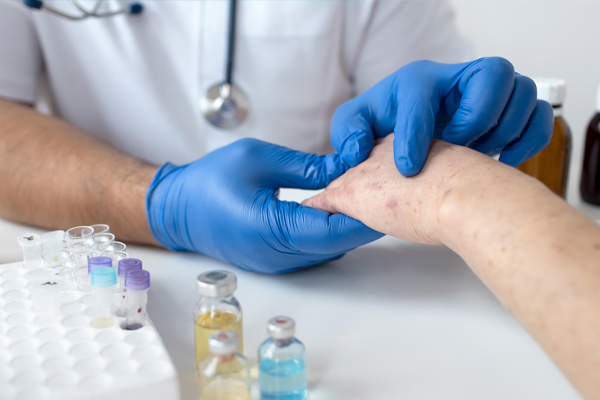
Everything You Need to Know About Monkeypox Disease
As the world recovers from the COVID pandemic, another disease is spreading. Monkeypox, a rare but deadly disease, is caused by a virus that attacks monkeys and other animals in the forested areas of Africa, although cases have been observed in other parts of the world as well. Currently, monkeypox does not pose a major public health threat, but communities need better awareness. In this article, we will take a look at what monkeypox is, how to identify its symptoms, and what steps can be taken to prevent this disease.
What Exactly is Monkeypox?
Monkeypox is a rare but non-lethal disease. It belongs to the Poxviridae family of viruses. Monkeypox can spread through close physical contact with an infected animal or individual. In humans, the disease typically spreads through skin-to-skin contact with someone who has monkeypox rashes, sores, or scabs. Additionally, monkeypox can spread through respiratory droplets, oral fluids, and direct or close contact between people. A person can also contract the disease from contaminated clothing, bedding, or other surfaces.
Monkeypox Outbreak
The first documented cases of monkeypox occurred in 1958 in colonies of monkeys kept for research purposes. Despite its name, the origin of the disease is unknown. Potential African rodents and monkeys may harbor the virus. Monkeypox was first reported in humans in 1970. Since then, other countries in Central and West Africa have reported monkeypox cases. Once relatively isolated viral infections are now spreading more easily in a globalized world. In the summer of 2021, a U.S. citizen returned from Nigeria with monkeypox. Following this, outbreaks occurred in Europe, the United States, and Australia in 2022.
Smallpox and Monkeypox – The Connection
Smallpox and monkeypox belong to the same virus family. The Orthopox genus includes the variola virus that causes smallpox and the cowpox virus. Monkeypox symptoms are similar to those of smallpox, but less severe. Monkeypox is also rarely fatal. To date, no deaths have been reported. However, monkeypox can lead to serious complications such as pneumonia, brain inflammation (encephalitis), and inflammation of the eyes. It is important to note that chickenpox and monkeypox are entirely different diseases.
What are the Symptoms of Monkeypox?
Does Monkeypox Affect Pregnancy?
There has been limited research on monkeypox and pregnancy. However, some studies show the effects of monkeypox outbreaks. The first perinatal monkeypox infection case was reported in Zaire at the 24th week of pregnancy. A 30-week pregnant woman had visible skin rashes and a febrile illness, and she gave birth to a premature baby weighing 1.5 kg. The baby was born with a skin rash similar to monkeypox symptoms. In another study of 222 symptomatic patients, 1 out of 4 pregnant women gave birth to a healthy baby, 2 had miscarriages in the first trimester, and 1 case resulted in fetal death. In the stillborn fetus, widespread cutaneous maculopapular skin lesions were observed, affecting the head, body, palms, and soles of the feet. While there is no definitive evidence, preliminary studies suggest that exposure to the monkeypox virus during pregnancy could be fatal for both the mother and the developing fetus. There is evidence that infected pregnant women transmit the virus to their babies. Therefore, preventive measures should be taken to ensure the optimal health of both the baby and the mother during pregnancy.
Spread of the Disease
Animals and humans infected with monkeypox can transmit it through contact. The virus can spread through a scratch or bite on an animal’s skin, or through contact with the blood, fluids, or waste of an infected animal. Monkeypox can spread, but this is rare. Touching an infected person’s sores or scabs, exposure to respiratory droplets or oral fluids, kissing, or engaging in sexual contact with an infected person can lead to transmission. Close contact can spread monkeypox, but it is not technically considered a sexually transmitted disease. The virus may spread through semen or vaginal fluids, but researchers are not 100% certain about the transmission mechanism. A person or animal that has recently come into contact with contaminated materials like clothing or bedding is also susceptible to monkeypox.
How is Monkeypox Diagnosed and Treated?
When a doctor diagnoses a patient with monkeypox, they will take a tissue sample from an open wound or lesion. The samples are then sent to a laboratory to be tested using polymerase chain reaction (PCR). Additionally, a blood sample may be required to test for antibodies to the monkeypox virus. The symptoms of monkeypox typically last from two to four weeks. In most cases, people with monkeypox recover without needing treatment. If diagnosed, your doctor will monitor your symptoms, try to alleviate them, prevent dehydration, and may recommend antibiotics if you are exposed to another infection. Currently, there is no approved treatment for monkeypox. It is unknown whether antiviral medications can help treat the disease.
Prevention is Better Than Cure
In clinical trials, the smallpox vaccine shows promise in preventing monkeypox, but it is not currently in use. Keeping infected animals away from humans and limiting person-to-person transmission are critical components of prevention.
Preventing the Spread of the Virus is Simple:
• Maintain distance from infected animals (especially dead ones).
• Avoid using contaminated bedding and other materials.
• Ensure all food containing meat or animal parts is thoroughly cooked.
• Wash your hands frequently with disinfectant and water.
• Be cautious when interacting with people who may be infected.
• Ensure you are a responsible sexual partner, using protection and barrier methods.
• Clean and disinfect frequently touched surfaces.
• Wear personal protective equipment (PPE) and a mask when caring for an infected person.